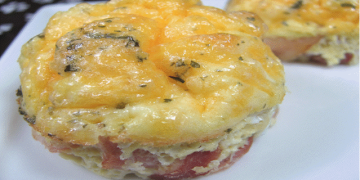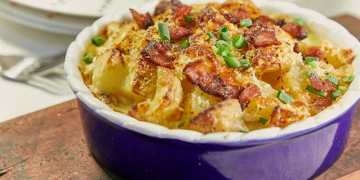







Make It Yours – See Your Price On Amazon!
Your Sales Price $149.99 - $142.49
A quick rundown of this product’s key features:
Product Description







1 Efficient Data Management
2 SSD NVMe&SATA Compatible
3 HDDs Max Up to 24TB









1 Built-in Fan
2 Plug and Play,Easy to Use
3 Independent Mounting
4 Compatible For Mac mini
5 Packing List



Innovation in Storage Solutions: The hybrid storage with HUB docking station compatible for Mac mini M4 offers a maximum storage capacity of 56TB. It supports two SATA HDDs/SSDs with a combined maximum capacity of 24TB and one M.2 NVMe SSD (2230/2242/2260/2280) with up to 8TB. This design integrates the benefits of high-capacity storage and high-speed performance, providing an advanced solution for diverse data management needs
10Gbps Transmission: Leveraging the USB 3.2 Gen 2 protocol, this m.2 nvme enclosure supports both M.2 NVMe and NGFF protocols, enabling high-speed data transmission at up to 10Gbps. Additionally, the hot data zone can be utilized as an external editing drive for efficient data processing
Expansion Ports for Mac Mini: MiniTower features hub expansion ports including USB-A (10Gbps) x 1, USB 2.0 x 3, and TF/SD 3.0 card slots, significantly enhancing the functionality of the Mac Mini M4 for both home and office use
RAID Mode: The 3.5-inch SATA hard drive enclosure can be configured in RAID 0, RAID 1, single-disk, or JBOD modes to meet diverse user requirements while ensuring robust data security. Note: The RAID mode controls on this unit operate in reverse order from bottom to top. Always verify settings before finalizing to ensure proper configuration and safeguard data integrity
Better Heat Dissipation: Featuring an anti-fingerprint aluminum shell and a low-noise fan integrated into the middle of the enclosure, it provides two cooling vents at the top and bottom for optimal airflow and performance. This ensures stable operation even when multiple devices are connected simultaneously
Our Top Reviews
Reviewer: Ulysses
Rating: 4.0 out of 5 stars
Title: Versatile external storage with some limitations
Review: I got this to add some external storage to my Linux systems. It’s appealing, supporting 3.5 & 2.5 inch hard drives or SSDs with an extra slot for an M.2 NVMe card, plus SD and Micro-SD slots and a USB port. It connects to your computer via USB-C on the rear, and uses an external power supply. It was clearly designed to pair with a Mac Mini, given its appearance, but works well with Windows and, for the most part, Linux. Support was responsive (and I did need it) and didn’t shy away from responding to questions about using it with Linux. The two internal hard/SSD drives can be combined into a JBOD (single device with all storage available), RAID0 (same with striping for performance) or RAID1 (each disk mirrored for redundancy, but only half the storage available). Or you can just access them as two individual drives. There is no NAS, it connects only via USB.The internal drives are where I ran into trouble. Initially, I tried to connect this to my file server (also a Linux system) with the internal drives configured as RAID1. The Linux system would not see the RAID device, but would see the NVMe and SD devices. I contacted customer support via email and got a response the next day. They recommended that I configure them as separate drives and use Linux’s software RAID. I was able to do that, but during the initial sync process, one of the drives would show an error and get dropped from the RAID array. I contacted support again (I should note that I was at this point also in the process of upgrading my server hardware) and they suggested trying the device’s hardware RAID again with the new server. That worked and it has been working fine since then. Interestingly, I amusing the same drives that showed an “error” with Linux software RAID previously, so whatever was causing that had to do with something other than the hard drive.My takeaway from all of this is, you probably don’t want to use this device with old hardware. My new systems all have USB 3.2 ports, which the old one did not (I had a PCI card that supported USB 3.0). In the course of all of the upgrades, I also installed the latest version of Fedora Linux (42) which also may have been a factor. But had I wanted to continue to use my (admittedly ancient) hardware (which I was replacing for other reasons) this probably would not have been an acceptable solution.I do give credit to Orico’s tech support for not just saying “we don’t support Linux”. They gave me a detailed response that showed they actually knew Linux, and were both helpful and responsive. That’s rare and deserving of my support.As for the device itself, installation was easy, it runs cool, and it’s quiet. I wish it had a little more visibility into the RAID status, and also the power button falls out (maybe some superglue would help. But, especially at its current price, I would recommend it.
Reviewer: Casey
Rating: 5.0 out of 5 stars
Title: This product is attractive, feature-rich, desktop functional, and a great value at $100!
Review: I purchased this drive on May 10, 2025 for about $100 after a $50 coupon. This seemed like a fantastic deal for $100:+2 bay external drive with hardware raid (RAID 0, RAID 1, JBOD, and PM/normal)+NVME/ NGFF drive bay+USB-C 3.2 port+USB-A 3.2 port+USB-A 2.0 ports x 3+TF and SD card reader+10Gbps transfer speeds+External, UL-rated power supplyFor my needs, this was better than purchasing an external drive enclosure for my HDDs, another external drive enclosure for my NVME drive, and a dongle for USB connectivity. Also, the 10Gbps connection has more than enough headroom for transferring files from traditional 7200 RPM HDDs.From a design perspective, I appreciate the vertical orientation for the drives, the aluminum construction, and the removable top. All of these design choices help remove heat efficiently without overwhelming fan noise. The white top cap is held on with magnets and can be easily removed for additional heat dissipation.Another design choice I like is the large NVME/ NGFF drive bay. Although this can be concealed with the magnetic metal cover, I chose to keep it off. The drive bay is spacious and allows me to use the MHQJRH M.2 2280 SSD Double-Sided Heat Sink on my NVME drive. This drive bay is in the back and faces away from me, so I’ll keep the cover off to maximize heat dissipation.Finally, hardware installation was straightforward. The appropriate screws were included for all the HDDs, as was a small screwdriver. There was also a length of thermal tape and a heat dissipation plate for the NVME drive. The process for setting up RAID1 wasn’t intuitive, but the manual provided enough information for the process. You’ll need to use a paperclip or SIM card ejector pin to hit the recessed “set” button next to the RAID switches. You’ll also probably need to use Windows Disk Management (Windows + X) to format and initialize the drives.This product is attractive, feature-rich, desktop functional, and a great value at $100!
Reviewer: Destrey
Rating: 4.0 out of 5 stars
Title: Solid External Storage, But Pricey
Review: I got this ORICO enclosure to expand my Mac Mini’s storage, and it works perfectly as advertised. The speed is great, and having the extra USB ports is a bonus in my small city apartment. It’s a bit pricey, though, which is the only real downside. My workflow is much smoother now thanks to this thing.
Reviewer: Rick DD
Rating: 3.0 out of 5 stars
Title: Not Rugged
Review: Felt really cheap and flimsy. Not worth the $149 price. A price of $89 would be more realistic.
Reviewer: SoCal Thom
Rating: 5.0 out of 5 stars
Title: 4.5 Star Product That Does What I Needed
Review: I have a slew of old hard drives from an Intel-era MacPro that are perfectly fine for long-term archival storage. When I got my new Mac Mini, I went looking for a solution to utilize these old drives. I came upon this Orinco mini tower and thought that if it allowed me access to those old drives, it would be worth the price. Well, it has exceeded my expectations in every way (but one, hence the -½ star, more on that later).The tower plugs into a USB-C port on the Mac Mini (actually, in my case, to a hub plugged into the Mini). It comes with a power brick that thankfully also has a standard plug so no outlet problems. Two USB-A ports on the rear. On the fron, two USB-A ports for a keyboard and mouse, plus SD card readers. But the real beauty is the slide-in bays for the SATA hard drives. Just screw your drives into them and they slide into place, nice and secure. PLUS, there’s a bay for an NVME drive. And this is where I deduct ½ star. After installing a 2880 NVMe drive with the supplied heat tape and cover, the door enclosing the drive simply wont stay shut. The little magnet holding it in place simply isn’t strong enough to do the job. A clear piece of tape did the deed, and it isn’t visible since it’s on the back of the tower. Everything works flawlessly so far, and it looks pretty cool on the desk. The only other minus is the slightly cheesy plastic lid covering the drive bays. It slightly cheapens the look of the unit but isn’t a deal breaker. I love this device!
Reviewer: Tahn
Rating: 5.0 out of 5 stars
Title:
Review: Ce boîtier externe Orico promet de combiner stockage (2x SATA + 1x NVMe) et hub USB/SD, une idée séduisante sur le papier.Points positifs :* Combine bien plusieurs types de stockage (2x HDD/SSD SATA, 1x SSD M.2 NVMe) avec des ports USB et lecteurs de cartes SD, c’est pratique.* L’installation des disques durs SATA dans les baies est simple et rapide.* Fonctionne correctement comme simple boîtier de stockage externe pour Windows ou Mac.Points négatifs :* Plusieurs défauts de finition agaçants : la trappe du SSD M.2 ferme mal (aimant trop faible), le capot supérieur fait un peu plastique bas de gamme…4.5/5
Reviewer: Luke
Rating: 4.0 out of 5 stars
Title:
Review: In breve, funziona molto bene ed è molto versatile. Le prestazioni sono buone. Può contenere contemporaneamente: 2 HDD, 1 NVMe, 1 scheda SD, 1 scheda microSD, e inoltre ha 1 porta USB-A veloce e 3 porte USB-A “lente” per aggiungere ulteriori periferiche/storage (c’è anche un’altra porta, USB-C, che però serve per collegare la torre al PC). La costruzione nei dettagli lascia un po’ a desiderare, anche se esteticamente è molto carina. Nel complesso, mi sembra una soluzione adeguata per mettere a disposizione una buona quantità di storage, con la comodità di avere un hub USB e un lettore di schede SD integrati. Non lo consiglierei tanto per chi vuole installarci una NVMe.Più in dettaglio, la costruzione non mi ha entusiasmato per un paio di motivi. Prima di tutto l’alloggio per la NVMe non è fatto bene. È difficoltoso installarci la scheda. Non ho trovato una vite che per tenerla bene (le viti sono tutte mischiate in un sacchetto, e quella del diametro giusto era troppo lunga). È fornito un dissipatore metallico per la NVMe, ma non mi sembra ottimo; in più se lo posizionavo sul NVMe non posso chiudere il coperchio. Infine, il coperchio stesso tende a saltare fuori dal suo posto con la NVMe installata (anche senza il dissipatore). Alla fine ci ho rinunciato e non ho installato la NVMe. Il coperchio bianco in cima alla torre viene tenuto più o meno in posizione da alcuni magneti. Peccato che non ci sia alcuna guida per evitare che il coperchio possa slittare o posizionarsi fuori allineamento, quindi si sposta molto facilmente.L’installazione dei dischi è filata liscia. Avrei apprezzato delle asole (anziché solo fori) sul supporto per facilitare il montaggio dei dischi.L’alimentatore un po’ grande, ma almeno la spina è una normale piccola Europlug a due poli (anziché una Schuko). È dimensionato molto generosamente (60 W). Fortunatamente i consumi rimangono contenuti: con due HDD attivi ho misurato un assorbimento di 15 W, mentre ho misurato 0 W con la torre spenta.I cavi in dotazione sembrano ottimi. C’è anche un cavo USB-C da 40 Gbps, che servirebbe per collegare la torre al PC, ma è molto corto.Le istruzioni non sono in italiano, e direi che sono insufficienti e confusionarie anche per chi sa leggere l’inglese. Sono mischiate assieme le indicazioni per due diversi prodotti Orico, creando confusione.Non ho provato le diverse configurazioni per i dischi. Ne ho installato due e li sto usando come dischi indipendenti.Le prestazioni sono buone. Riesco a leggere a scrivere alla massima velocità dei dischi che ho installato. Bene anche il lettore di schede SD, anche se non è il più veloce che ho.Nel complesso, è un dispositivo funzionale e versatile. Esteticamente è pure carino. Si perde un po’ nei dettagli costruttivi. Non lo consiglierei per chi intende usare lo slot NVMe.
Reviewer: Miguel
Rating: 4.0 out of 5 stars
Title:
Review: Lo que más destaca es el diseño minimalista, del mismo modo lo que menos me gusta es la tapa superior, es de anclaje magnético y muchas veces con un simple toque se descoloca.Por otro lado aporta un plus gracias sus multiples conexiones SD/TF, varios puertos USB, la compatibilidad con RAID y discos NVMe. Su velocidad de transferencia lo hacen optimo para sistema de almacenaje externo.El paquete contiene la unidad principal, disipador térmico, adaptador de corriente, cable USB-C–> USB-C, cable USB-C –> USB-C/A.El un dispositivo para usuarios exigentes que buscan diseño y buen rendimiento. Lo que más destacaría es su compatibilidad multisistema.
Reviewer: Pete Charles
Rating: 3.0 out of 5 stars
Title:
Review: It looks really good, is ok to put together apart from the thermal pad and the metal heat sink for the SSD being impossible to fit at the same time.It arrived with the front button floating around in the box and not attached. The enclosure fan is quite noisy also. Otherwise it works fine.
Reviewer: Like a Review
Rating: 4.0 out of 5 stars
Title:
Review: ORICO MiniTower 2 Bay RAID GehäuseProsHier mal ein schickes Festplattengehäuse von ORICO für einen gehobenen, aber nicht übertriebenen Preis, wenn man sich am Markt so umschaut. Es wird wirklich viel Aluminium eingesetzt, die Alu-Optik ist auch in den Details gut. Ich habe eine dicke 2,5” HDD und eine alte, etwas schwierige 3,5” HDD eingesetzt, und es funktioniert auf Anhieb und ohne Probleme. Zudem gibt es noch einen M.2-Slot an der Rückseite. Das finde ich wirklich sehr sinnvoll, vor allem in Zeiten, wo schnell mal eine mittlerweile zu kleine M.2-SSD aus dem Desktop-PC rausfliegt oder vom alten Laptop übrig bleibt. Auch um einen HDD-Raid zu beschleunigen, ist es mittlerweile eine günstige Methode.Die Kühlung ist zumindest theoretisch funktional. Es gibt Öffnungen an der Unterseite, wo Luft reinkommen kann, über das Gehäuse kann Wärme abgegeben werden, und oben versucht ein kleiner Radiallüfter, etwas von der warmen Luft raus zu befördern.Der Einbau der Festplatten funktioniert gut, und die mitgelieferten Festplattenkäfige passen gut rein, und die Festplatten gehen sauber in die SATA-Buchse rein.Das Gehäuse sieht wirklich schick aus und steht gut auf dem Schreibtisch. Die Anschlusskabel gehen nach hinten weg, vorne sind noch praktische Buchsen bzw. ein Cardreader, zudem ist der Powerbutton gut erreichbar und sichtbar auf der Vorderseite. Das ist alles gut und alles fein.ConsEs ist aber leider nicht alles perfekt. Es ist alles nicht weltbewegend, aber doch einige konkrete Punkte, die zumindest den Premiumanspruch zunichtemachen.Der Lüfter ist ein wenig zu laut für Leute, die tolerant gegenüber Lüfterrauschen sind, und ein gutes Stück zu laut für Apple-Fanless-Freaks. Dafür, dass man kaum Luftstrom spürt, ist das Geräusch schon nennenswert hoch.Keine intelligente Lüftersteuerung. Eine Festplatte in so einem Gehäuse ist ja längst nicht bei jedem im Dauereinsatz. Es macht also wenig Sinn, dass der Lüfter durchgehend auf gleicher Drehzahl läuft. Das ist nur akzeptabel, wenn es unhörbar ist, und das ist hier nicht der Fall.Die Klappe vom M.2-Fach ist komplett aus Alu. Das ist wirklich toll, ABER… Oben sollte der Deckel von einem Magneten gehalten werden, und unten ist eine Lasche. Bei mir ist wegen der Lasche unten der Deckel total auf Spannung, wenn ich ihn zudrücke. Beim Deckel zumachen passt es gerade so mit etwas Reiben von Metall auf Metall. Es ist so auf Spannung, der Deckel springt regelrecht nach ein paar Sekunden vom Gehäuse ab.Der Deckel des Festplattengehäuses ist nur aus schnödem Kunststoff. Er wird mit Magneten gehalten, was aber auch bedeutet, dass der Deckel leicht zur Seite rutschen kann. Wäre nicht so schlimm, wenn das Gehäuse auch aus Kunststoff wäre, aber gegenüber dem Alu-Gehäuse fällt der Qualitätseindruck leider auffällig ab, und das stört auch das Auge. Das Weiß passt halt offensichtlich nicht zum Silber des Gehäuses.FazitFür mich passt hier etwas nicht. Will man ein günstiges Festplattengehäuse und einem ist die Optik egal, ist dieses Gehäuse hier nicht die erste Wahl. Das alleine wäre völlig in Ordnung, gar kein Problem, die Zielgruppe ist eine andere. Aber für genau diese Zielgruppe mit gehobenen Ansprüchen wäre es meiner Meinung nach besser gewesen, den Preis noch ein bisschen höher zu setzen und das entstandene Budget dafür zu nutzen, die Qualität zu erhöhen, um sich für diese Zielgruppe eine klare Empfehlung zu erarbeiten. Ich kenne jemanden, dem ich das Festplattengehäuse niemals empfehlen würde, dafür wäre ihm der Lüfter zu laut.Das Produkt ist nicht schlecht und es ist nah dran, aber für anspruchsvolle Kunden hat es zu viele Macken, und für anspruchslose Kunden ist es schlicht zu teuer. Letzteres ist ja völlig okay, ersteres ist aber ein Problem.Am Ende lande ich bei wohlwollenden 4 von 5 Sternen, aber auch mit der Frage, für welche Zielgruppe dieses Produkt gedacht ist?
Price effective as of Jul 02, 2025 19:20:45 UTC
As an Amazon Associate Dealors may receive a commission for purchases made through these links.














































![[Download] Intuitive 3D Modeling | Abstract Sculpture | FLIGHT | DANA KRYSTLE](https://techcratic.com/wp-content/uploads/2025/08/1755630966_maxresdefault-360x180.jpg)









































![[DEBUT COVER] Intergalactic Bound – Yunosuke / CircusP [MIKU EXPO 10th]](https://techcratic.com/wp-content/uploads/2025/08/1755598927_maxresdefault-360x180.jpg)










